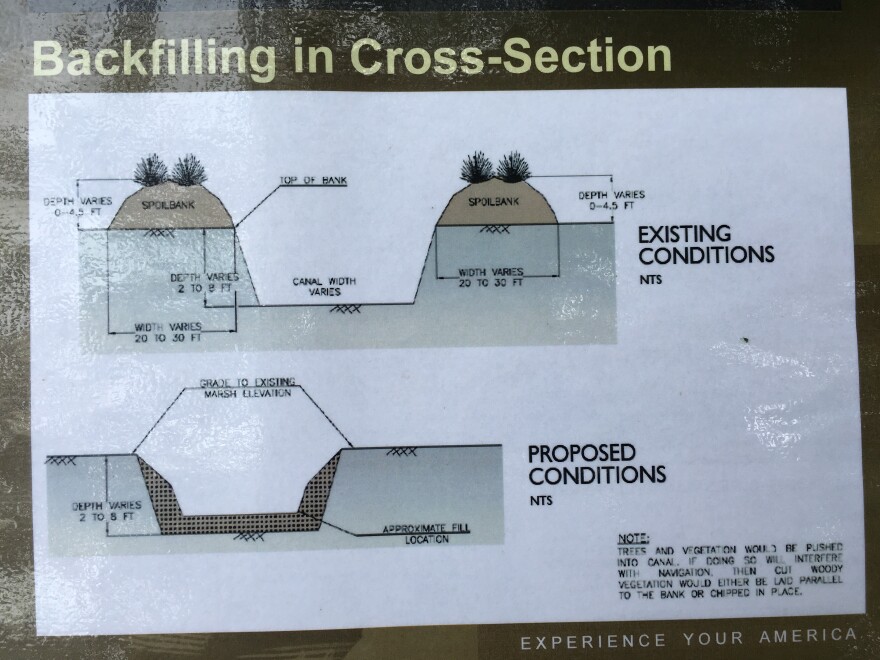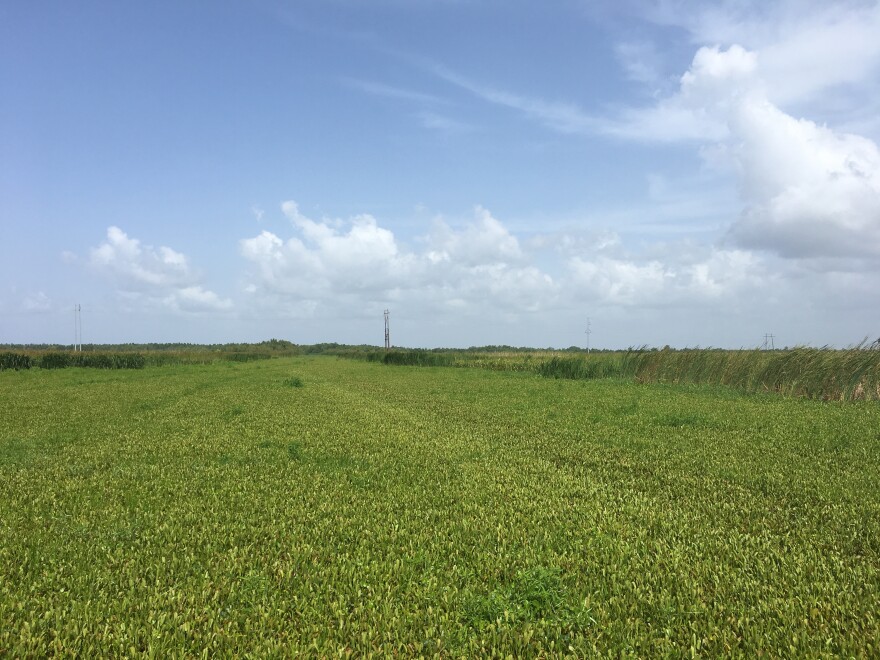Thousands of miles of canals have been cut throughout Louisiana’s coastal marsh -- most of them for oil and gas wells and pipelines. A lot of them have never been filled back in, which has contributed to coastal erosion.
This week on the Coastal News Roundup, WWNO’s Travis Lux talks about those canals -- and a proposal to fill them back in -- with environment reporter Mark Schleifstein from Nola.com | The Times-Picayune.
You can listen to the Coastal News Roundup on New Orleans Public Radio every Friday at 7:45am and 4:44pm.
This interview transcript has been edited for clarity.
Q: These oil and gas canals are all over the Louisiana coast. You can easily see them on Google Maps, crisscrossing the marsh. About how many miles are there overall, and what impact have they had on the coastal erosion problem?
LSU wetland scientist Gene Turner thinks there are about 35,000 wells that were drilled over the last 100 or so years; all of those have canals associated with them. It’s a huge amount of land we’re talking about -- and open water, as it turns out. He thinks that’s a key cause of wetlands loss. As much as 95%. Others say it’s closer to 35-36%, and you have to factor in the fact that we’re not getting sediment from the Mississippi River into some of these wetlands because of the levee system.

Q: For a long time, the state didn’t actually require companies, after they dug these canals, to fill them back in. But this report from Dr. Gene Turner (LSU) says the state should take matters into its own hands and do just that: fill the canals back in. The thing is, a lot of this land is privately owned, so what kind of conflict might that present?
There are indeed conflicts that include oil and gas companies, who say, “Look, these canals are going to wells that might actually be reactivated sometime in the future.” Although, a lot of them are plugged and abandoned, as Turner says. And then there are concerns that fishermen might be using them as well. That’s why Turner proposes doing this on publicly owned properties, so you try to avoid some of those problems.
Or, just try negotiating with property owners and using either government and local partnerships or nonprofits to step in and help do that. And he thinks just starting with 10 canals would be a good start.
Q: Is this an expensive method of restoring land? How does this fit into the larger picture of the different strategies that there are for restoring coastal land?
Turner’s been estimating that the cost of this is about $30,000/acre. And if you filled all of those 27,500 canals he thinks that the cost would be $335 million. He compares that to the cost of the state’s Coastal Master Plan -- which is $50 billion over 50 years -- and he says this is a much smaller bill, and it might have a significant effect.
Q: And so what’s the state’s position been on these canals? Does the state want to fill them in? Has there been any effort on the state’s part to do that?
The state does end up filling in some canals as part of other projects that it’s doing. It does not have a coast-wide plan yet. That’s not part of the master plan. But state officials said they’re more than willing to consider that as we get to the 2023 rewrite of the plan, as something that might be considered.
Of course, the state is also involved in these numerous lawsuits. There are 42 lawsuits that have been filed by parishes against oil and gas companies, asking them to restore these canals. So that’s one thing that could force the oil and gas industry to come to the table and this might be an indicator of one way that the problem could be solved.
Support for the Coastal Desk comes from the Walton Family Foundation, the Greater New Orleans Foundation, the Foundation for Louisiana, and local listeners.




